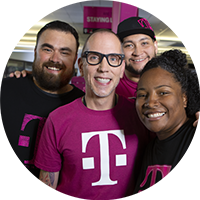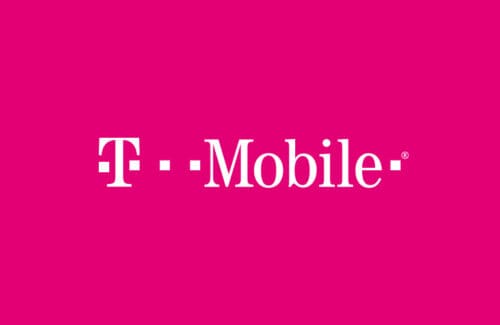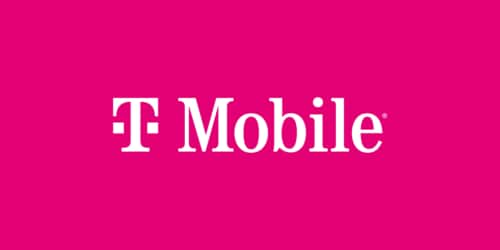I love this town.
As CTO of an agile, disruptive mobile internet company, I feel at home here in San Francisco. The Valley’s entrepreneurial energy feels perfectly Un-carrier. (And worlds away from the phone-utility-mindset of the old-guard carriers.)
Today, we’re here to announce Un-carrier 7.0 − a completely new way to think about mobile coverage. It’s a huge day for T-Mobile and for my team. And I want to dig a little deeper into the how and the why of today’s news − and why the implications of today’s announcements are truly massive.
Rapid network innovations
Our LTE rollout is just one shining example of our Un-carrier approach and how my team is second to none in deploying new technologies faster than anyone else. Over the past 18 months, we’ve gone from zero LTE to delivering America’s fastest nationwide 4G LTE network covering 234 million Americans.
We’ve gone from one Wideband LTE market to delivering it to 17 markets in a matter of months. And unlike those other national carriers, 100% of our customers with LTE devices can immediately reap the benefits as we light up Wideband LTE in their area. There’s no need to go out and buy a new phone (I’m looking at you Sprint Spark and Verizon XLTE).
And with more data network capacity than any other major national carrier, we offer wide-open lanes for surfing, streaming, shopping, posting, tweeting and whatever else you like to do on your mobile device.
This summer, we were we the first to launch Voice over LTE (VoLTE). Then, less than three months later, we became the first US wireless provider to deliver it nationwide. As of today, we have over 3.6 million VoLTE-capable devices already on our network − far more than any of our competitors. And customers have made over 52 million crystal-clear VoLTE calls to date.
And, just three months after acquiring low-band 700 MHz spectrum, the team is already equipping sites with the gear needed to light it up. We’re looking forward to getting seven 700 MHz-compatible devices into customers’ hands before the end of this year − and have even begun active field-testing so we can get these devices running on the new spectrum.
Beyond the obvious
As we’ve said before, data and IP are woven into the fabric of this company. This means we optimize for delivering the best data experience for today’s mobile internet age. That’s what we mean when we say we’ve designed our network Data Strong™. It’s no wonder T-Mobile customers use more data than customers on any other major national carrier.
These are certainly the most visible technical advancements the team has rolled out. But we don’t stop at the obvious.
Take device optimization for example. This team works closely with OEMs to optimize the performance of every device we sell. We’ve created an industry-leading Validation and Innovation Lab that’s become a key resource for our partners to refine and improve their devices. That T-Mobile customers enjoy better battery life from their devices is just one outcome we love to see from our focus on how we optimize every device for an unmatched customer experience.
We also recently began deploying 4x2 MIMO, which offers more reliable and faster LTE speeds as well as improved device battery life. This technology doubles the connection points between a smartphone and cell tower, improving coverage where people need it the most.
And, when we rolled out VoLTE, we deployed a little known feature from the LTE Advanced set of standards called enhanced Single Radio Voice Call Continuity (eSRVCC). Our customers don’t − and shouldn’t − care that one of the challenges with VoLTE is what happens if you leave the LTE footprint. By using eSRVCC, we ensure calls don’t get dropped when users move into areas that don’t have LTE − that’s in contrast to Verizon’s (still) un-launched VoLTE.
Beyond the network
And you know what? Innovation at a mobile Internet company doesn’t end with capacity, radios and cellular towers.
We’ve been focused for a long time on giving our customers a network built for data. And we look at any and all available IP connections. In the age of the mobile Internet and interconnected devices, you simply can’t ignore the Wi-Fi connection. There are four billion Wi-Fi-enabled consumer electronics in use across the world for an average of seven Wi-Fi devices for every Wi-Fi household. By 2017, over seven billion Wi-Fi devices are expected to be in use globally.
For years, T-Mobile has been delivering an exceptional Wi-Fi Calling experience − T-Mobile customers who use Wi-Fi for calling or texting often don’t even know they’re using it. It’s that easy.
Now for the first time, thanks to our launch of next generation Wi-Fi Calling and our use of new capabilities in our evolved Packet Data Gateway (ePDG), we’re providing our customers a seamless HD Voice calling experience whether they’re connected to a T-Mobile tower or a Wi-Fi connection. No other major national carrier is doing this with Wi-Fi Calling today.
With ePDG and our nationwide VoLTE (with eSRVCC), customers with a capable smartphone can start a call on VoLTE and hand off to a connected Wi-Fi network or vice versa, or move onto our 4G HSPA+ or 2G network. Your call won’t drop. You won’t even know you’ve switched between networks.
And even though we dedicate more bandwidth to VoLTE calls than any other major national carrier − with a 23.85 Kbps Wideband AMR voice codec rate − our HD Voice doesn’t require VoLTE. So you can continue your call with crystal-clear HD Voice quality even if you leave the LTE network. It just works.
Over time, we’ve developed an IP library of 11 Wi-Fi related patents, and now we’ve put ourselves in the position to build beyond the towers to un-leash Wi-Fi, transforming all available Wi-Fi locations worldwide into extensions of our network.
But after working closely with OEM partners to bring next-generation Wi-Fi Calling to our customers, we couldn’t ignore the need to rethink the entire experience. The Wi-Fi Calling experience is dependent on three core gates: your ISP, your Wi-Fi router and your Wi-Fi Calling device. We’ve been optimizing our Wi-Fi Calling devices in our validation labs for years now and have it down to a science.
After going deep on the topic of Wi-Fi, an a-ha moment came with the understanding that not all Wi-Fi environments are created equal. Most home Wi-Fi routers are several years old and built when most households connected perhaps just one or two computers. Today, we’re connecting laptops, tablets, smartphones, not to mention home automation devices and appliances.
And so, today we’re launching the T-Mobile Personal CellSpot™. We are setting out to give our customers an incredible personal Wi-Fi device that could effectively act as a T-Mobile tower in their home or office. We added some T-Mobile secret sauce, our VoLTE magic and worked closely with our partner to ensure T-Mobile voice calls over Wi-Fi are prioritized, with seamless and simple setup and support. On top of all that, our patent-pending quality of service feature is designed so that T-Mobile voice calls maintain their clarity − no matter how much streaming music, video or games are coming through theT -Mobile Personal CellSpot.
The T-Mobile Personal CellSpot has been designed to give our customers the freedom and power to decide where they want coverage.
I’m proud of my team for doing what the other big guys can’t quite figure out. Whether it’s eSRVCC or next-gen Wi-Fi Calling and texting, they’re able to get it deployed faster than those old phone utility companies. At the end of the day, the difference between a carrier and an Un-carrier is that we’ll use every available technology to deliver not only the fastest nationwide 4G LTE network − but even coverage where no network has gone before. Tomorrow that may be drones and lasers. Today, that’s Wi-Fi.
That’s the Un-carrier way.
Battery life results based on independent third party testing; does not include Apple devices. To see details on HD Voice and Wi-Fi calling, see T-Mobile.com





